Effects Of Ice Accretion On Ship Stability
Ship stability is an important subject wherein extensive research is being carried out to get a better understanding of various factors that influence the stability of a ship at sea. Some of these research topics include the study of the initial and damaged stability of a vessel. Now, there are also important components when it comes to ship stability, which is – static and dynamic stability.
Certain on-board operations, wave-induced motions, wind effects, etc. come under these two factors, for e.g. we analysed the effect of heavy lifting operations on ship stability in the earlier article. Remember we spoke about the stability being influenced by the relative shifting of weights across the beam on the deck of the ship? Well, this time we will get back to these principles again.
Read on..
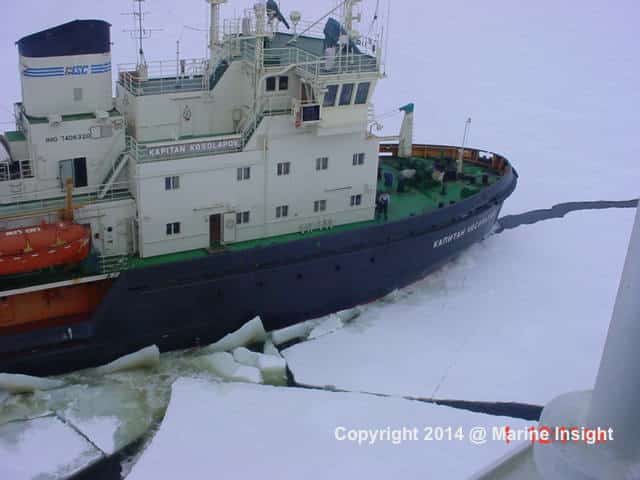
In modern times, with some major climatic changes, there are certain opportunities opening up in the form of newer and shorter sea routes.
For example in China, there has been an emphasis on using the route across the Arctic Ocean to reach Europe and the USA. This was given a thumbs-up after the exploration carried on by the Icebreaker Xuelong.
China has seen a very good opportunity to tap the potential of this route formed as a result of climate change. But it is not only the Arctic that is freezing cold, sea routes also pass through North Atlantic or North Pacific regions.
Remember the assignment of freeboards on Plimsoll Lines? Enough said already, you should get a picture already by now as we come to the topic – accumulation of ice on a ship.
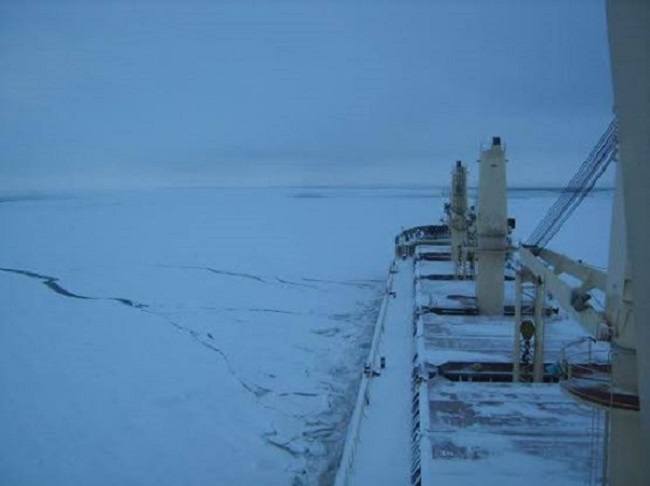
Ice formation can be deadly from the point of view of Ship Hydrostatics. Ice at sea doesn’t exist in the form of snowfall but in sleet and freezing fog only.
Besides the ones mentioned, ice can also exist in the form of a layer accumulated along the ship sides from the spray of the vessel in the fore region.
This usually happens in regions having sub-zero temperatures and that is why the above-proposed sea route if undertaken has its own risks as we will see now.
Read: Different types of ice loads on ships
The accumulation of ice on the deck, the deck housing tops and other places of the ship raise the CG of the vessel owing to the growing weight and location of loading.
Also knowing that the amount of spray will increase with increasing vessel draft, we must note that the vessel stability is affected by the icing formed as a result of it. This also reduces the freeboard obviously since more buoyant force has to be generated to counter the effect.
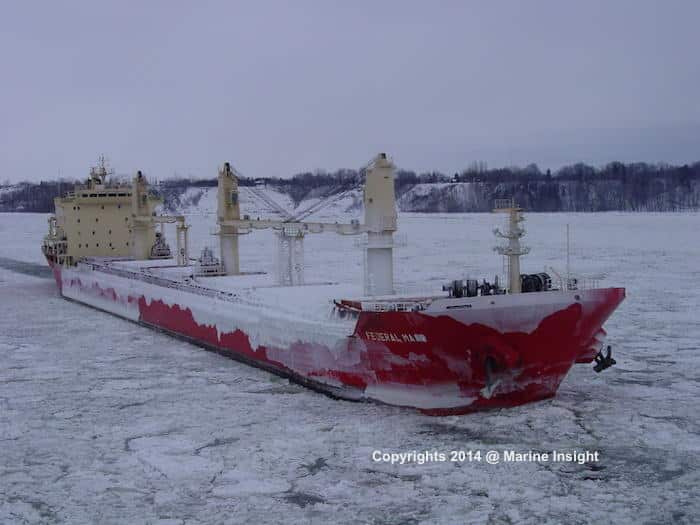
The rise in CG raises the KG of the vessel and as we will see in the diagrams, this affects the dynamic stability of the vessel. It is therefore important to make certain allowances in design for this.
The allowances can be either ‘half’ or ‘full’ depending on the trade practice and are provided in the sample of GZ curves of the vessel. This covers the normal range of the ship’s loaded conditions.
Although there are regulations to decide the same, in general, any winter seasonal zone is considered an area of potential ice accretion.
Now, let us consider two more things here. One is the symmetry of the loading of ice, the other being the rate at which it occurs. Speaking of the latter first, we already mentioned that in all probability ice accretion invariably reduces the metacentric height and the GZ values. Certain guidelines exist to aid in the calculation of the final centre of mass of this ice-ship system.
The KG values are also accordingly calculated. Below is a reference to an experiment where there has been some simulated ice accretion and loading was done to achieve the conditions at a certain height of KG. However, this is experimental and the phenomenon is a practical situation wherein the ice accretion is almost always asymmetrical.
Now the two common things coming out from both graphs besides the negative slop initially and lowering of GZ are:
- There is something called Deck Edge Immersion which decreases, causing water to enter the deck at a smaller angle of heel than original
- The vanishing angle of stability which is an indicator of the overall range of stability is also reduced by a significant margin
Now, getting to the rate of ice formation, we have a plethora of variables predicting a possible scenario. The wind, its direction with reference to the ship, air temperature and of course, the sea temperature. It is reasonable to believe that the ship’s form also plays an important part.
Thicker pieces of ice will slide off the ship’s structure, provided the roughness of the surface, corrugations, external bracket frames and especially any form of gap on deck, be it something like a crack, add to the accretion as opposed to a smooth and continuous surface.
At times, this rate of accumulation of ice may equal the rate of loss of existing ice cover! Ice Nonograms (as they are called) are diagrams used to estimate this rate of ice accumulation as a function of wind speed and surrounding air temperature.
Having known a bit about the effects of ice accretion on the stability of the ship, which do you think is at a greater loss? A smaller ship with a large surface area for its size or a larger vessel with a far greater vanishing point of stability?
Let us know in the comments below.
Do you have info to share with us ? Suggest a correction
Latest Naval Arch Articles You Would Like:
Subscribe To Our Newsletters
By subscribing, you agree to our Privacy Policy and may receive occasional deal communications; you can unsubscribe anytime.
Web Stories











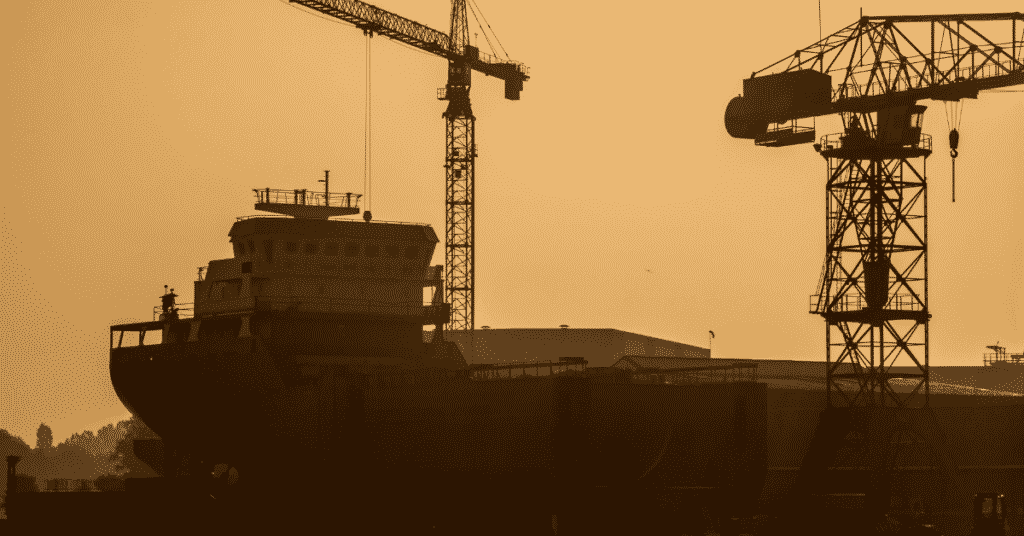
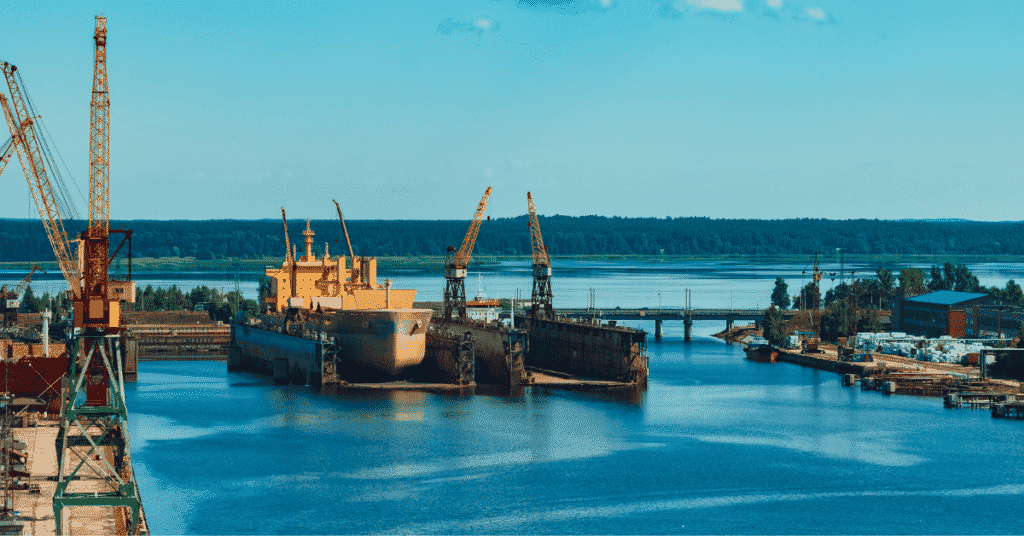
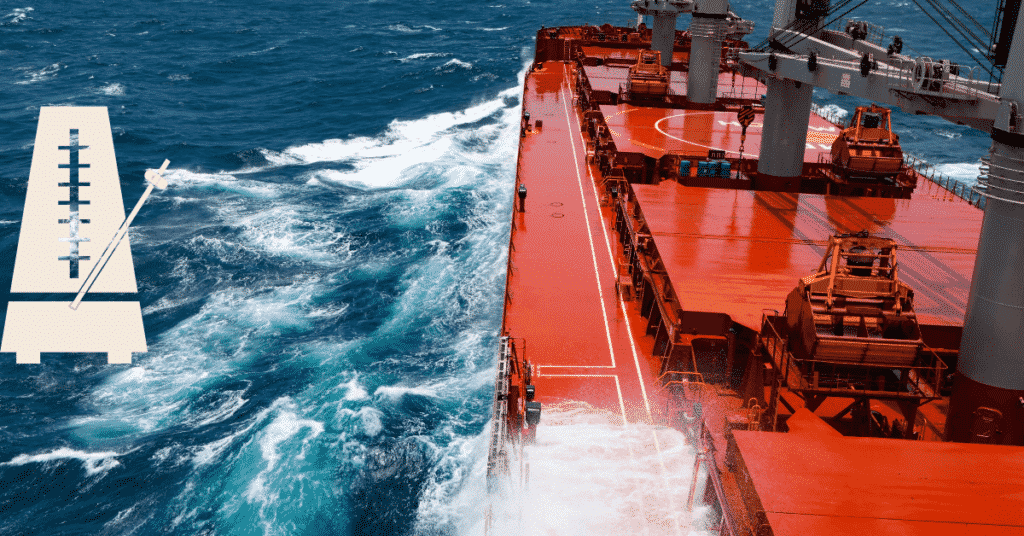
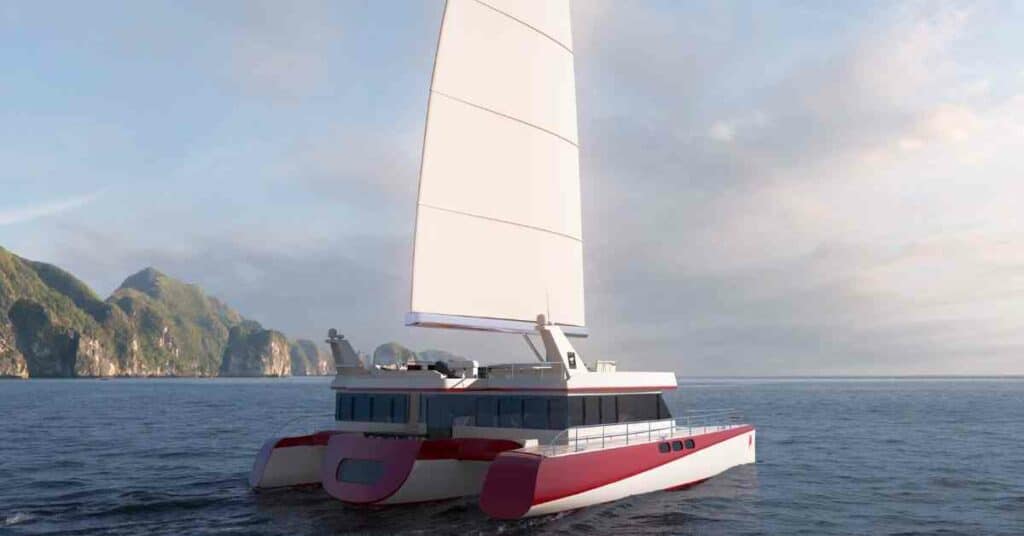
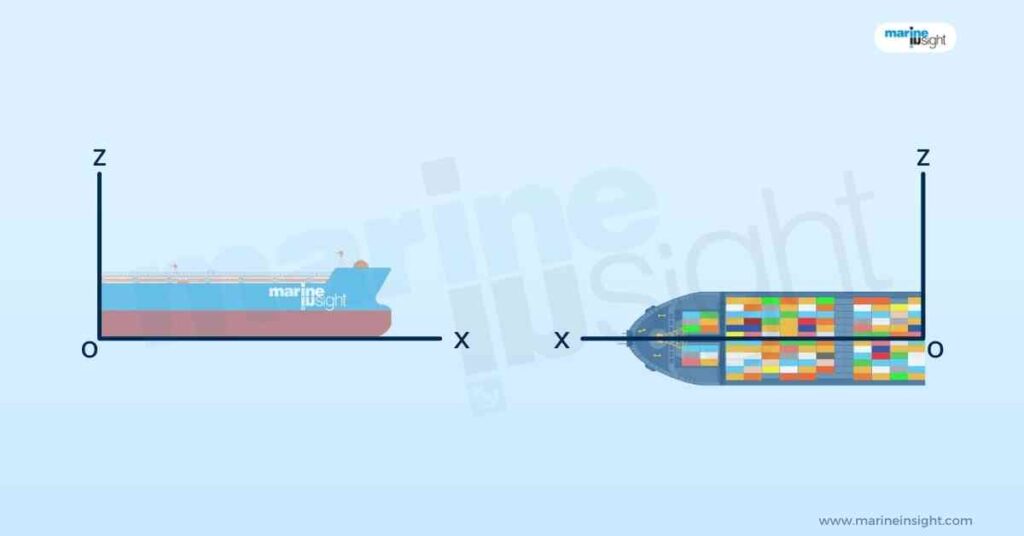





While the description of ice accumulation on surfaces is one aspect of the problem, it is only a small contributor overall. Far more risk exists when other surfaces, such as the lifting apparatus, electrical wiring and similar surfaces begin to ice up. For example, imagine the ship’s forward crane, with its plethora of wires running through sheaves back and forth along the length of the boom. These wires have a small surface area initially but as ice begins to form increase in girth, providing more surface on which ice can accrete, which increases the surface area… Before long, one may see a 1″ wire grow astronomically to 10″ or more. Electrical wires, mesh surfaces, radio antennas and similar materials are all at risk, and the latter items share another risk – they are difficult to clear. Traditionally, ice accumulation is cleared using wooden mallets, but beating the ice with some gusto, even with wooden mallets, can quickly render electric and electronic equipment to an u serviceable state. In addition, the ice accumulation alone can have the same effect on antennae, including radar antennae. On one occasion I can recall picking up a small target on radar at about five miles during a snowstorm. We were reasonably manoeuvrable but I watched it carefully as it closed on a near collision course. Finally I picked it up visually – it was a 326,000 ton tanker! Although I was the stand-on vessel, might made right and I ducked. My radar scanner was completely covered in snow. It was one of the old mesh scanners. I assume that the tanker had a similar problem, but I was on a smallish SAR vessel, so I may have disappeared in the clutter.
Highly interesting! All things being similar on both ships I would say in the “same icing environment” not linked and reduced with the size smaller ships or boats they would be in principle at much greater risks mostly from icing spray. And I believe the practice of various restrictions and warnings in the Gulf of Saint-Lawrence for fishing boats and small ships outings in icing conditions would help confirm that.
Maybe there are some tank-tested correlations for this theory of mine? Under icing rain, however colder and higher surfaces might well accrue ice faster. That said; I didn’t revisit ship stability from 45 years when on a number of purse seiners capsize formal inquiry. I never saw those nonograms in my days.